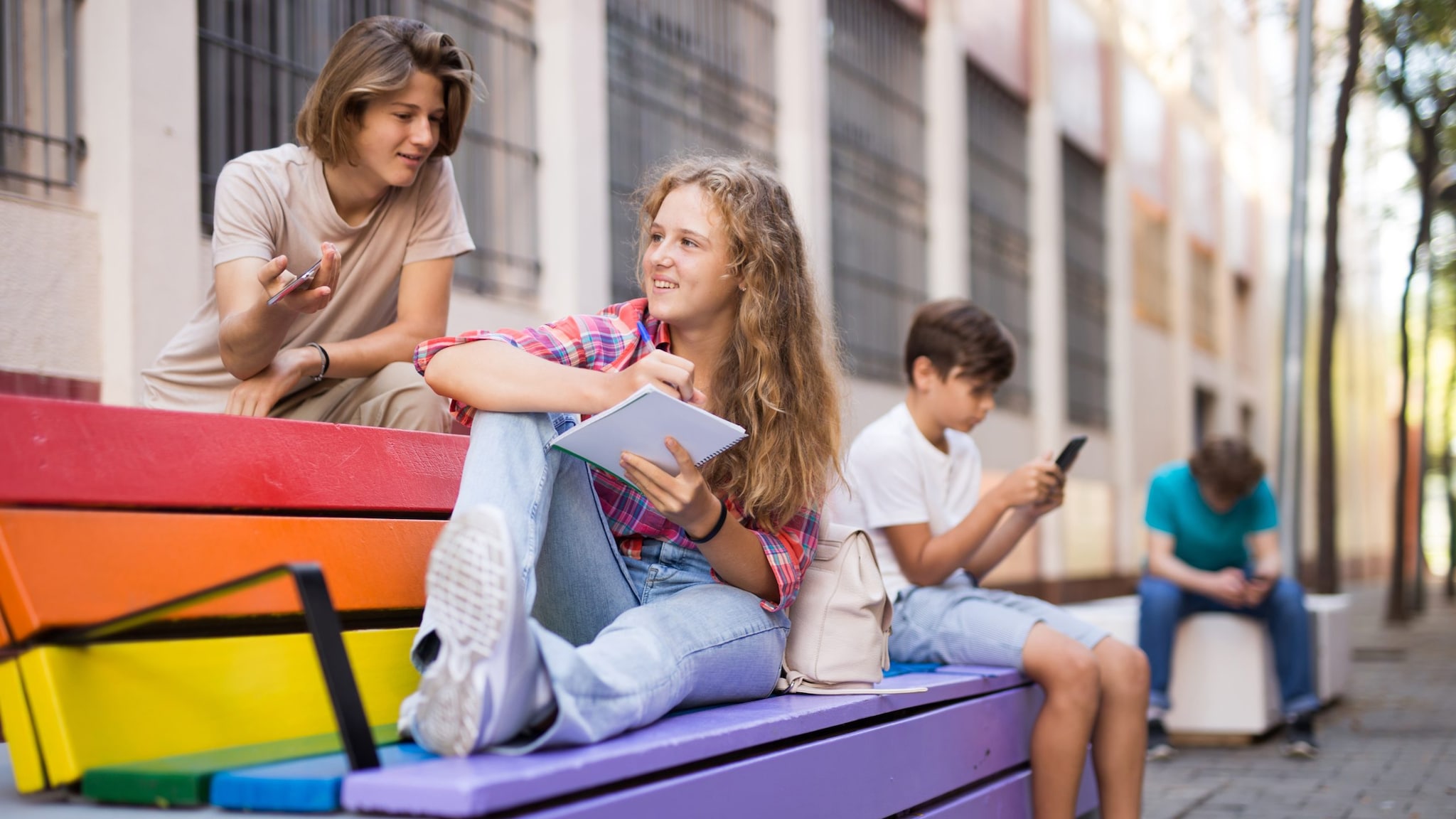At a glance
- There are some important firsts in the 2023 national YRBS data. These include findings about social media, unfair discipline at school, and racism in schools—and the impact on students’ mental health.
- Especially impacted are: female students; lesbian, gay, bisexual, transgender, queer/questioning (LGBTQ+) students; and students from marginalized racial and ethnic groups.
- Protective factors for youth mental health were also studied. These data show how we can better support our nation's young people.

New information in the 2023 YRBS
For the first time, the 2023 national Youth Risk Behavior Survey (YRBS) asked students whether they identify as transgender (those whose gender identity differs from their sex assigned at birth). Students' responses support comprehensive lesbian, gay, bisexual, transgender, queer/questioning (LGBTQ+) youth data.
The YRBS also included questions about experiencing racism in school, unfair discipline at school, and how often students used social media.
The survey results highlight topics such as the prevalence of:
- Sexual violence.
- Missing school because of safety concerns.
- Suicidal thoughts and behaviors.
Youth mental health
As we saw in the Youth Risk Behavior Survey Data Summary & Trends Report: 2013–2023, we are in the midst of a youth mental health crisis. Yet we are also seeing promising improvements.

- The percentage of students overall who had persistent feelings of sadness or hopelessness (42% to 40%).
- The percentage of female students who felt persistently sad or hopeless (57% to 53%) and who seriously considered attempting suicide (30% to 27%).
- The percentage of Hispanic students who: felt persistently sad or hopeless (46% to 42%), experienced poor mental health (30% to 26%), seriously considered suicide (22% to 18%), and made a suicide plan (19% to 16%).
- The percentage of Black students who attempted suicide (14% to 10%) and who were injured in a suicide attempt (4% to 2%).
- The percentage of students overall who were threatened or injured with a weapon at school (7% to 9%).
- The percentage of students overall who were bullied at school (15% to 19%).
- The percentage of students overall who missed school due to safety concerns, either at school or on the way to school (9% to 13%).
YRBS findings
Reports in CDC's Morbidity and Mortality Weekly Report (MMWR) highlight factors that increase youth risk for poor mental and behavioral health—and protective factors.
These data also tell us how factors like social media, racism, and unfair discipline are impacting youth. The findings also point to ways parents, caregivers, schools, and communities can support young people in the areas outlined below.
More than three-quarters of students reported frequent social media use. Frequent social media use was associated with:
- A higher prevalence of being bullied.
- Feelings of sadness and hopelessness.
- Suicide risk among students.
Experiencing racism was 2–3 times more prevalent among students from all marginalized racial and ethnic groups compared to White students.
High school students who experienced racism had a higher prevalence of poor mental health, suicide risk, and substance use.
Black students were more likely than White and Hispanic students to report unfair discipline at school. Students who reported receiving unfair discipline (compared to students who did not) were more likely to report the following:
- Poor mental health.
- Persistent sadness and hopelessness.
- Suicidal thoughts and behaviors.
- Other health risk behaviors.
These reports point to ways to support young people:
How we can reduce health risks among students
Schools can empower students and help protect their physical and mental health. They can do this by ensuring that school environments are healthy, safe, and supportive, particularly for the most vulnerable young people.
These findings are especially helpful for students, staff, parents, and caregivers to better understand the risks and issues young people face.
Here are some actions that can have a positive impact:
CDC developed an action guide with strategies for schools to use when improving mental health.
Promoting Mental Health and Well-Being in Schools
What Works in Schools
In schools that have implemented the program, students experienced:
- Improvements in sexual behavior.
- Decreases in marijuana use.
- Decreases in absenteeism due to safety concerns.
- Fewer experiences of forced sex.
When young people feel connected at school, they are less likely to experience poor mental health, suicidal thoughts and behaviors, substance use, violence, and sexual risk behaviors. They are also more likely to engage in positive health behaviors like physical activity and healthy eating. Schools can:
- Provide professional development to educators on classroom management and inclusivity.
- Support student-led inclusive clubs.
- Identify safe spaces and safe people.
- Consider a welcoming school breakfast program and alternative models (grab-and-go or breakfast in the classroom). These options can foster social inclusion and belonging.
- Enforce anti-harassment policies.
Schools also can increase connectedness by putting relationship-building programs in place that help strengthen connections between students, families, and school communities.
